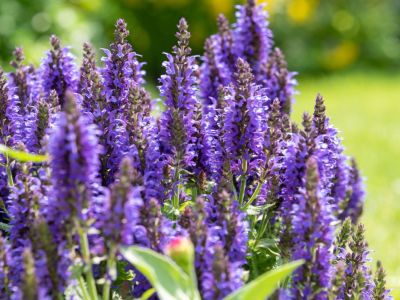Salvia Plant Types for the Garden
Blooms of most salvia plants are long lasting and attract butterflies and pollinators, which are always good for the garden. Salvia plant types may be annual or perennial, most are rapid growers and tolerate summer heat with more graceful, spiky blooms. Many colors are available from different types of salvia and these include blues, purples, pinks, and reds as well as some whites and yellows. Some salvias even take on a shrub-like appearance, such as rose sage (Salvia pachyphylla). The foliage of growing salvia remains attractive for the season and is often the source of the fragrance. Depending on the salvia plant types you choose, you may experience the fragrance of pineapple (Salvia elegans), fruit (Salvia dorisiana), or the common spice sage (Salvia officinalis). In addition, the recently popular Chia plant seeds come from the Salvia hispanica plant.
How to Grow Salvia
Salvia is also referred to as sage in many different types of salvia. Learning how to grow salvia varies among the different types of salvia too. They can be planted from seeds, seedlings, or cuttings when the soil has warmed outside, following the last frost date. You can plant salvia in average soil in a sunny to partly shady location for most varieties. Some growing salvia plants, however, such as Japanese yellow sage (Salvia koyamae), like shade and rich, moist soil. When planting different types of salvia with which you are not familiar, research each plant to find their preferred growing conditions.
Care of Salvia Plants
A member of the mint family, the care of salvia plants is moderate with most growing salvia varieties. Requirements with watering, as with growing, varies among the different salvias, but most prefer to dry out between waterings to a ½ inch (1 cm.) deep. Fertilization with a time-release plant food encourages growth and more flowering spikes. Salvias flower on spiky racemes or panicles rising above the plant. When blooms are spent, remove these spikes to encourage additional flowering. If the salvia plant begins to look tired or overgrown by midsummer, you can also remove one-third of the plant. Salvia plants will regrow and reward you with blooms that last until autumn.
